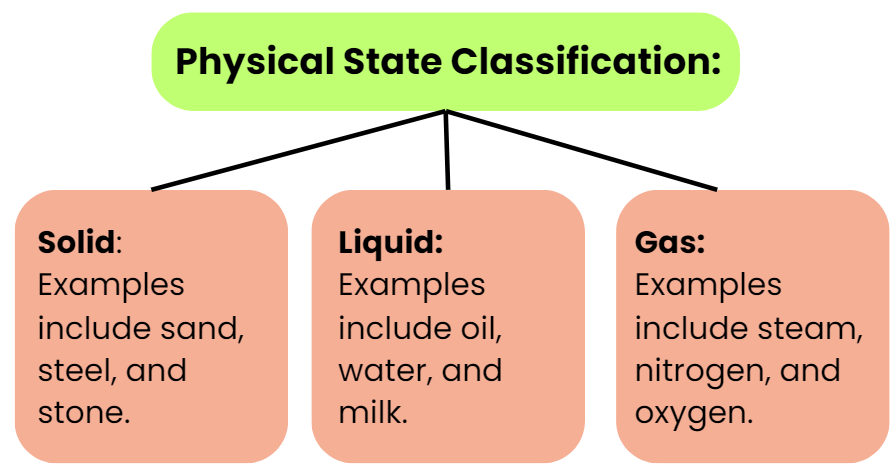Primary 6 Exam > Primary 6 Notes > Preparation for NCEE > NCERT Summary: Sorting Materials into Groups
NCERT Summary: Sorting Materials into Groups | Preparation for NCEE - Primary 6 PDF Download
Object Around Us
Objects are composed of one or more materials, which can be either man-made or naturally occurring. Materials play a crucial role in determining the properties and characteristics of objects.
Material Composition
- Objects may be made up of a single material or a combination of different materials.
- The same material can be used to create various types of objects, showcasing its versatility in different applications.
Man-made vs Naturally Occurring
- Materials can be either artificially created by humans or found in nature.
- Understanding the distinction between man-made and natural materials is essential in appreciating the diversity of objects.

Properties of Materials
Materials exhibit various fundamental properties that influence their usage in creating objects. Recognizing these properties is vital for understanding the behavior of materials in different contexts.
Occupying Space and Mass
- All materials have the inherent qualities of occupying space and possessing mass.
- These properties contribute to the physical presence and weight of objects made from these materials.

General Properties of the Material

Solute, Solvent, and Solution
- Solute: Substances that dissolve in a solvent. Example: Sugar or salt in water.
- Solvent: A substance that dissolves the solute, forming a solution. Example: Water, a universal solvent.
- Solution: The homogeneous mixture resulting from the combination of a solute and a solvent. Example: Sugar dissolved in water or salt dissolved in water.

How are materials grouped?
- Objects are made of different materials with distinct properties.
- Choosing materials with the right properties is essential for their intended use.
- Materials have properties like roughness, luster, transparency, solubility, flotation, attraction to a magnet, conduction of heat, and conduction of electricity.
Advantages of classification
- Sorting things is advantageous because it makes life simpler and more organized.
- Sorting also allows us to study materials based on their properties, making it easier to understand patterns.
- Overall, sorting makes life more convenient, saves time, and promotes an organized and efficient way of managing our belongings.
The document NCERT Summary: Sorting Materials into Groups | Preparation for NCEE - Primary 6 is a part of the Primary 6 Course Preparation for NCEE.
All you need of Primary 6 at this link: Primary 6
|
254 videos|647 docs|140 tests
|
FAQs on NCERT Summary: Sorting Materials into Groups - Preparation for NCEE - Primary 6
| 1. What is the purpose of sorting materials into groups? |  |
Ans. The purpose of sorting materials into groups is to categorize them based on their similar properties or characteristics. This helps in organizing and classifying different materials, making it easier to understand and study their properties and uses.
| 2. How can materials be sorted into groups? |  |
Ans. Materials can be sorted into groups based on various criteria such as their physical properties (e.g., shape, size, color), chemical properties (e.g., whether they are soluble or insoluble in water), and uses (e.g., materials used for construction, materials used for cooking).
| 3. Why is it important to sort materials into groups? |  |
Ans. Sorting materials into groups is important because it allows us to understand and study the properties and characteristics of different materials. It helps in identifying similarities and differences between materials, which can be useful in various fields such as science, engineering, and manufacturing.
| 4. What are the advantages of sorting materials into groups? |  |
Ans. Sorting materials into groups has several advantages. It helps in simplifying the study of materials by organizing them based on their properties. It also aids in the identification and classification of materials, making it easier to find specific materials when needed. Additionally, sorting materials into groups can help in the development of new materials and the improvement of existing ones.
| 5. Can materials belong to multiple groups? |  |
Ans. Yes, materials can belong to multiple groups. This is because materials can have different properties and characteristics that can be used to classify them in more than one way. For example, a material can be both soluble in water and have a specific shape, allowing it to belong to two different groups based on its solubility and shape.
Related Searches

















